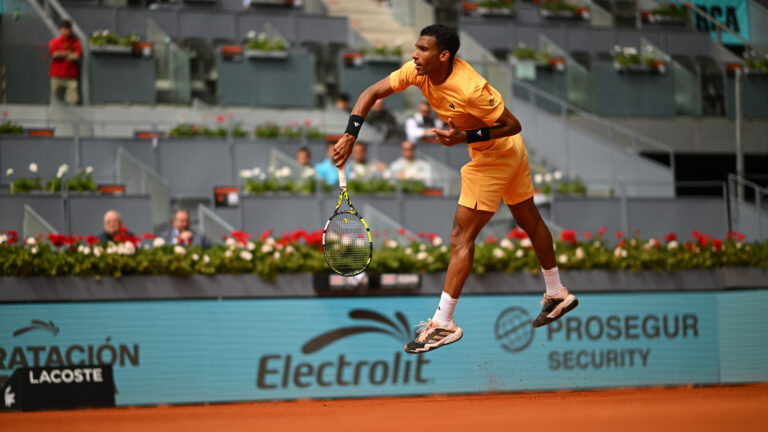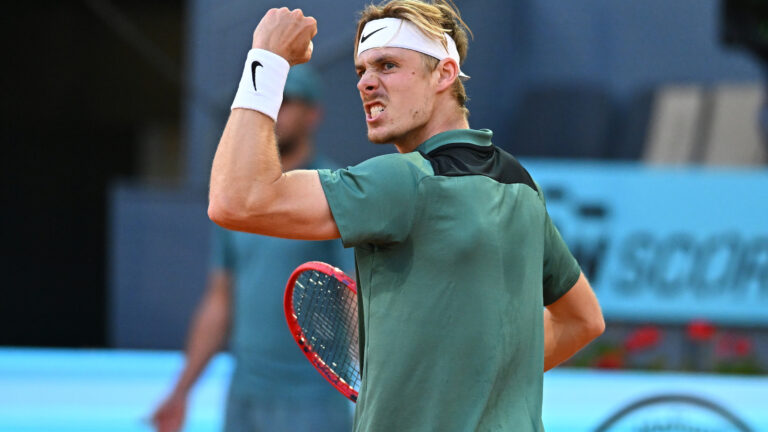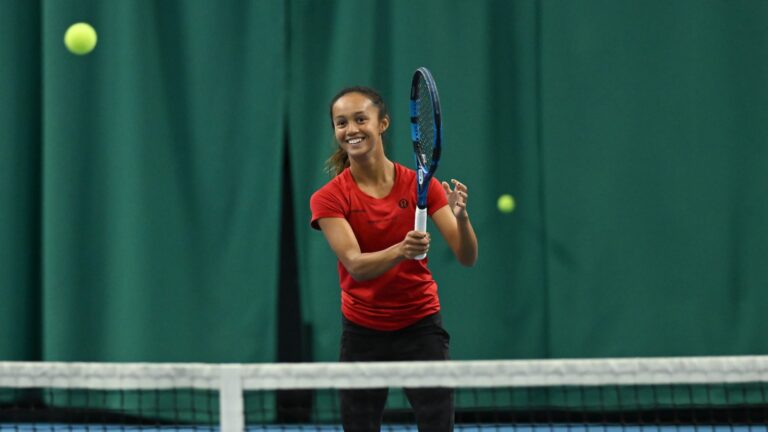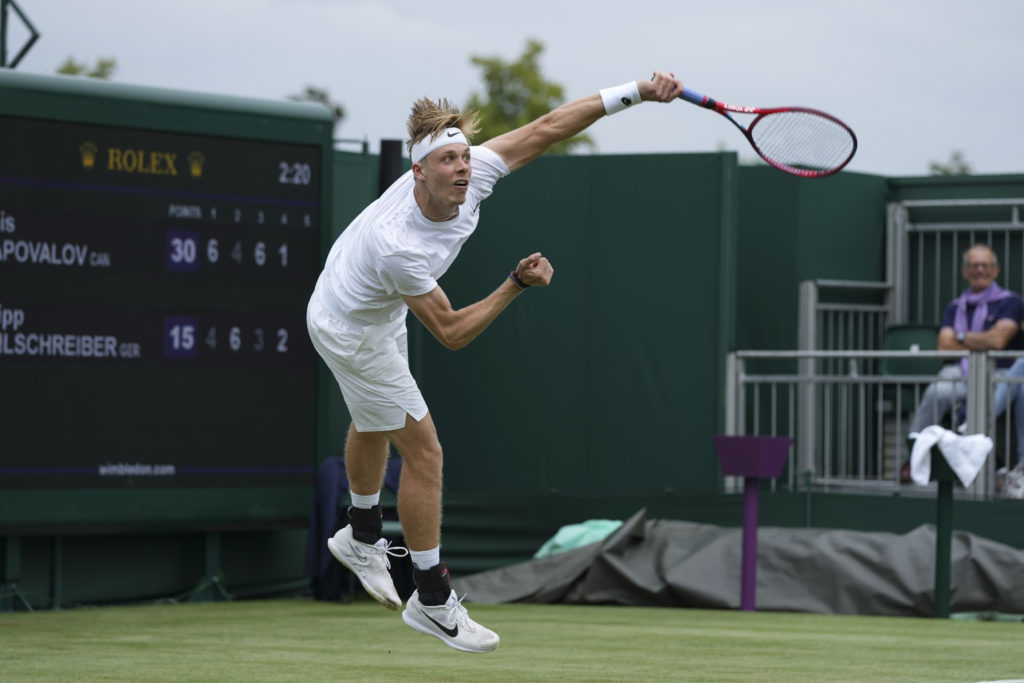
Denis Shapovalov needed five sets and more than seven hours on Tuesday to finally overcome Philipp Kohlschreiber 6-4, 4-6, 6-3, 5-7, 6-4 and reach the second round of Wimbledon.
The actual on-court match lasted three hours and 35 minutes, with a rain delay coming with the No. 10 seed leading the No. 115–ranked German two sets to one but trailing on serve at 5-6 in the fourth set.
Persistent precipitation meant four hours and 10 minutes went by before play could resume on the still somewhat greasy Court 12 grass.
When it did, Shapovalov played a terrible game – starting with a double fault and then two unforced errors bracketed around a Kohlschreiber winner to lose serve on four points. That forced a fifth set.
In that set, both players held serve uneventfully until it was Kohlschreiber’s turn at 3-all. As if to return the favour from Shapovalov at the end of the fourth set, he had a dreadful game, low-lighted by three forehand unforced errors, grouped around a bomb forehand winner by Shapovalov, to drop his serve on four points in a row after leading 15-love.
Two more service holds and the 22-year-old Canadian wrapped up the victory, his first at Wimbledon since beating Jeremy Chardy in 2018.
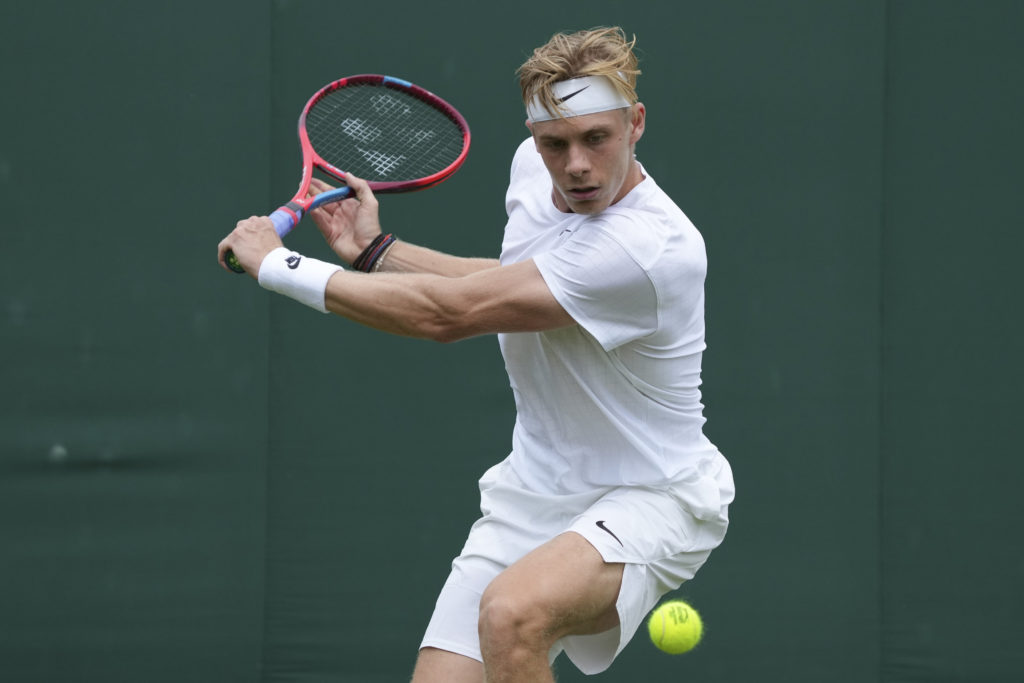
An interesting stat about the 37-year-old German was that he had won 12 of previous 13 matches against lefthanders like Shapovalov– the suggested explanation being that his excellent single-handed backhand was ideal for countering a left-hander’s conventional pattern of hitting forehands cross court to a right-hander’s backhand. That stat is now 12 of his last 14 matches mainly because it was Kohlschreiber’s forehand that let him down in that critical seventh game of the final set.
It can often appear that there are two Shapovalovs in his matches – good Denis and bad Denis. Good Denis is a high-flying maestro who simply explodes shots that laser past helpless opponents – bad Denis is the one who tends to misfire wildly and keep opponents in the match.
He was the latter when he lost serve on four points at 3-4 in the fourth set – all errors including two double faults, even if he did break back in the following game. Peter Fleming, the 66-year-old former American player who ranked No. 8 in 1980 and who’s better known as John McEnroe’s long-time doubles partner, was doing commentary and said at that time, “that was a horrific game. You want to know why Shapovalov is not a top-10 player yet, then that game was Exhibit A. With a talent like that, you would expect him to be in the top-five and competing for majors.”
Fleming quickly acknowledged that he realized Shapovalov had reached the top 10 (for one week last September) but was basically making the point that the gifted Canadian’s raw talent knows no bounds.
While the statistics from the match appear to confirm the double-edged sword of the Shapovalov game – 58 winners and 57 unforced errors – most players would readily accept those numbers as the price for getting a winning outcome by playing aggressive, attack-minded tennis. What they wouldn’t accept was that Shapovalov’s 14 aces were outnumbered by 16 doubles faults.
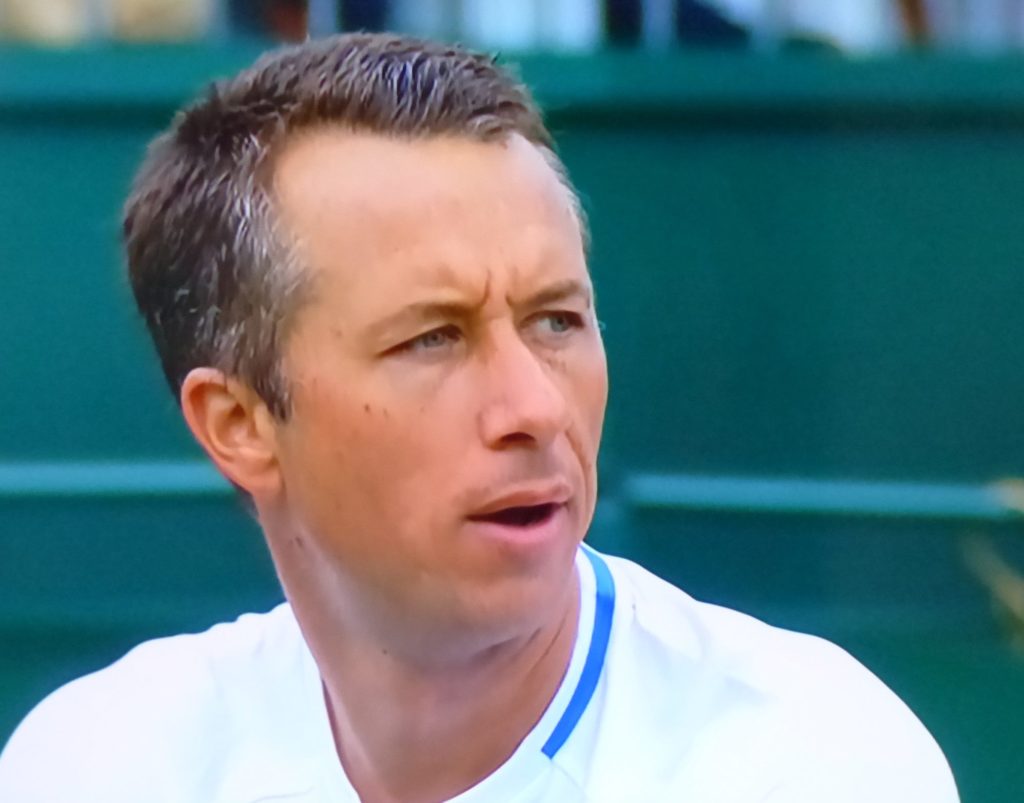
Kohlschreiber, playing his 16th Wimbledon, had a winners to unforced errors ratio of 30/26. He did his best to hang with Shapovalov but his hopes were predicated on dips in the level of his opponent. He got enough to force five sets but he was always chasing the score and, when Shapovalov tightened up his game late in the fifth set, there was little he could do to counter.
“It’s a great feeling to win this match,” Shapovalov said. “Especially against a great player like Philipp. Honestly, I’m a huge fan of his game. Growing up I watched him several times at the Rogers Cup and I always loved the way he played. I was really happy that I was able to pull through and play the way I did and come up with big points when I needed them, especially against Philipp who is definitely really underrated right now. Obviously, he’s dropped his ranking because he’s been injured, but he’s a really, really tough competitor.”
Post match, Shapovalov spoke about his decision to skip the French Open last month. “It definitely gave the shoulder enough rest and time to kind of regroup,” he said. “And also the rehab and everything I did – just strengthening myself a little bit more, getting ready for the grass courts. So far it’s been really great. Obviously, to this point I have had probably my best grass court season, so it definitely was the right call.”
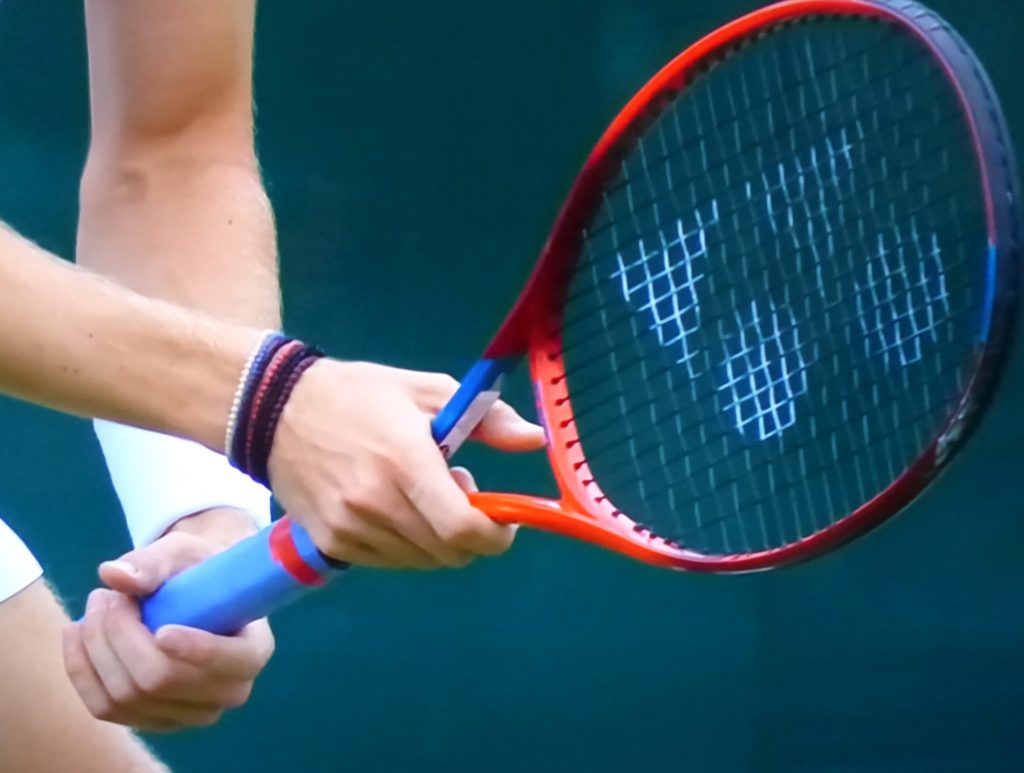
After what are basically four years on the pro tour, Shapovalov is still a work in progress but a No. 12 ATP ranking illustrates that he is headed in the right direction. One number that particularly stands out – he leads the tour with 73 per cent of break points saved.
In the second round, he will face No. 70-ranked Pablo Andujar, who upset Roger Federer in Geneva before Roland Garros. On Tuesday, the 35-year-old Spaniard outlasted No. 101 Pierre-Hugues Herbert 7-6(9), 4-6, 7-6(7), 5-7, 8-6. In their only previous meeting, Shapovalov beat Andujar 6-2, 6-3, 7-6(3) in the first round at the 2019 Australian Open.
That will be Wednesday, and it is scheduled for Court 17 but not before 5 p.m. (noon ET in Canada).
Shapovalov was a little coy when speaking about his chances at this year’s Wimbledon. “Hopefully,” he said, “in a couple years I can really be a big contender here. I do feel like this surface does suit my game.”
With the results of the first two days, the two other top-seeded players in his quarter of the draw – with a potential semi-final looming against Novak Djokovic – are No. 8 Roberto Bautista Agut and No. 22 Dan Evans.
On Wednesday, Bianca Andreescu, Leylah Fernandez and Félix Auger-Aliassime will finally make their 2021 Wimbledon debuts.
Andreescu is first up at 11 a.m. (6 a.m. ET in Canada) on No. 2 Court against Alizé Cornet, Fernandez takes on Julia Ostapenko in the third match on Court 6 and Auger-Aiassime is the third match on No. 2 Court against Thiago Monteiro.
Vasek Pospisil, who won his first round on Monday against Roberto Carballes Baena, will play No. 57-ranked Frances Tiafoe – fourth match on Court 5 after an 11 a.m. start. The 23-year-old American played an impressive match to upset No. 3 seed Stefanos Tsitsipas on Monday.
“He’s a super-dangerous, athletic player,” Pospisil said about Tiafoe. “He had I think not the best period up until the last few weeks. I know he’s been playing really well the last three, four weeks, coming off a challenger title (in Birmingham). He’s full of confidence obviously. He plays well on grass courts – great backhand, can play everything really.”
The weather forecast going forward is better for Wednesday, Thursday and Friday, with a strong chance of showers on Saturday and Sunday. And this Sunday will be the final middle Sunday that is supposed to be without scheduled play because, beginning in 2022, Wimbledon will become a 14-day straight-through event with no mid-tournament break.
From the archives
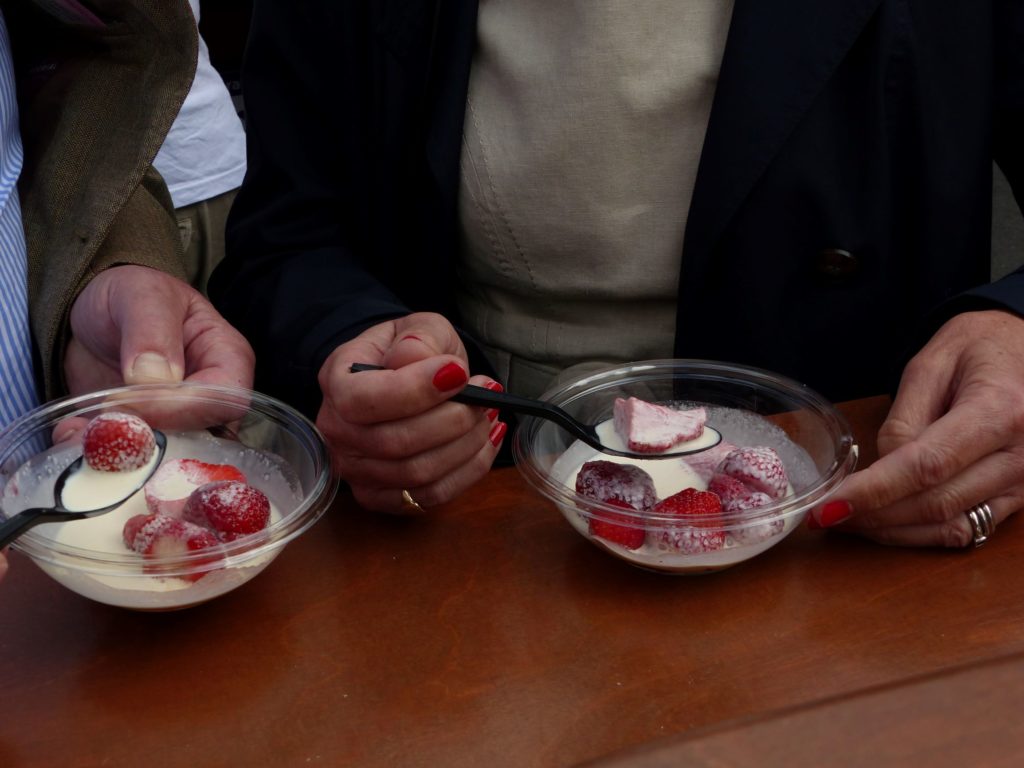
Self-explanatory.
Feature Photo: Martin Sidorjak
